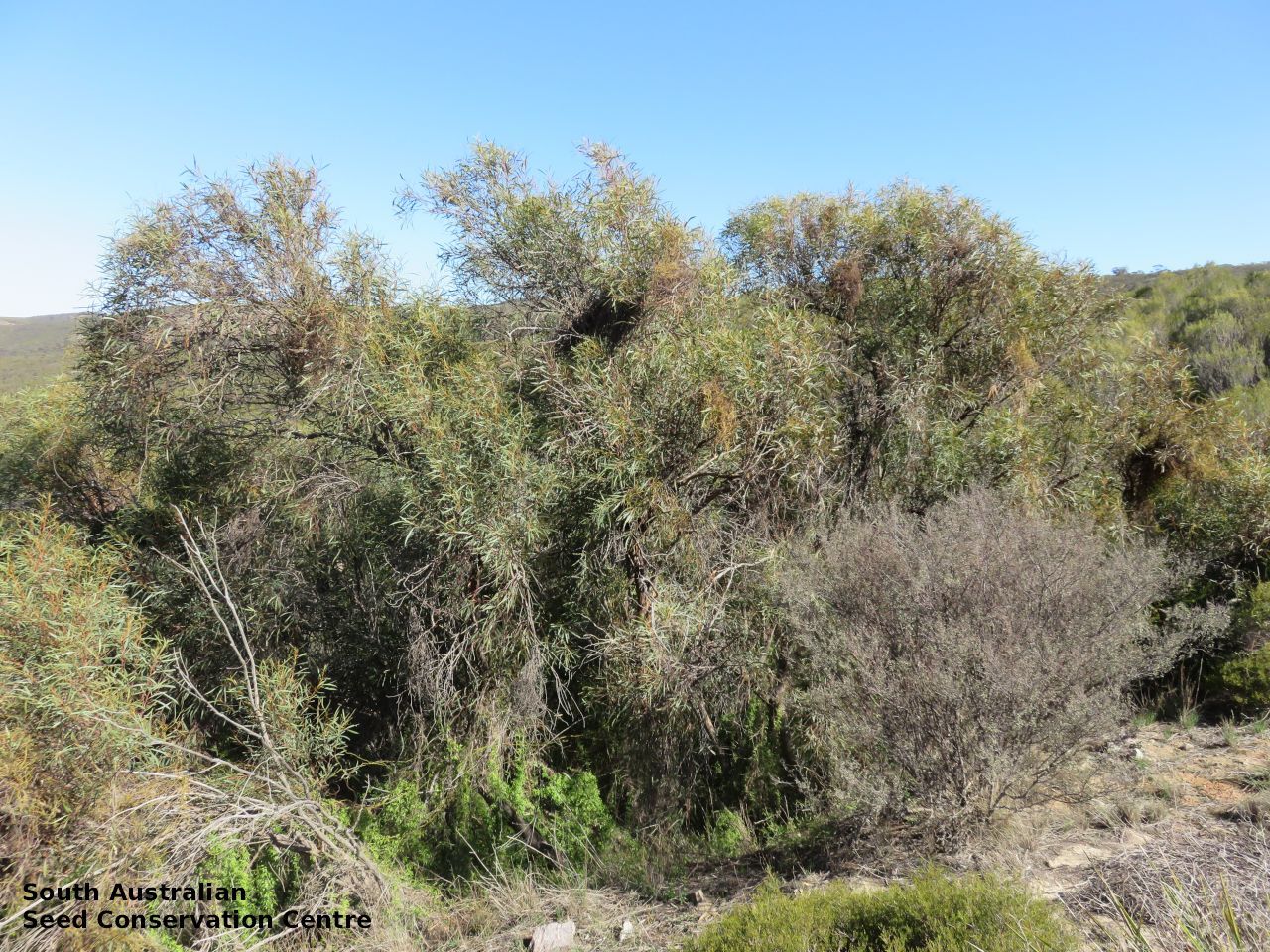

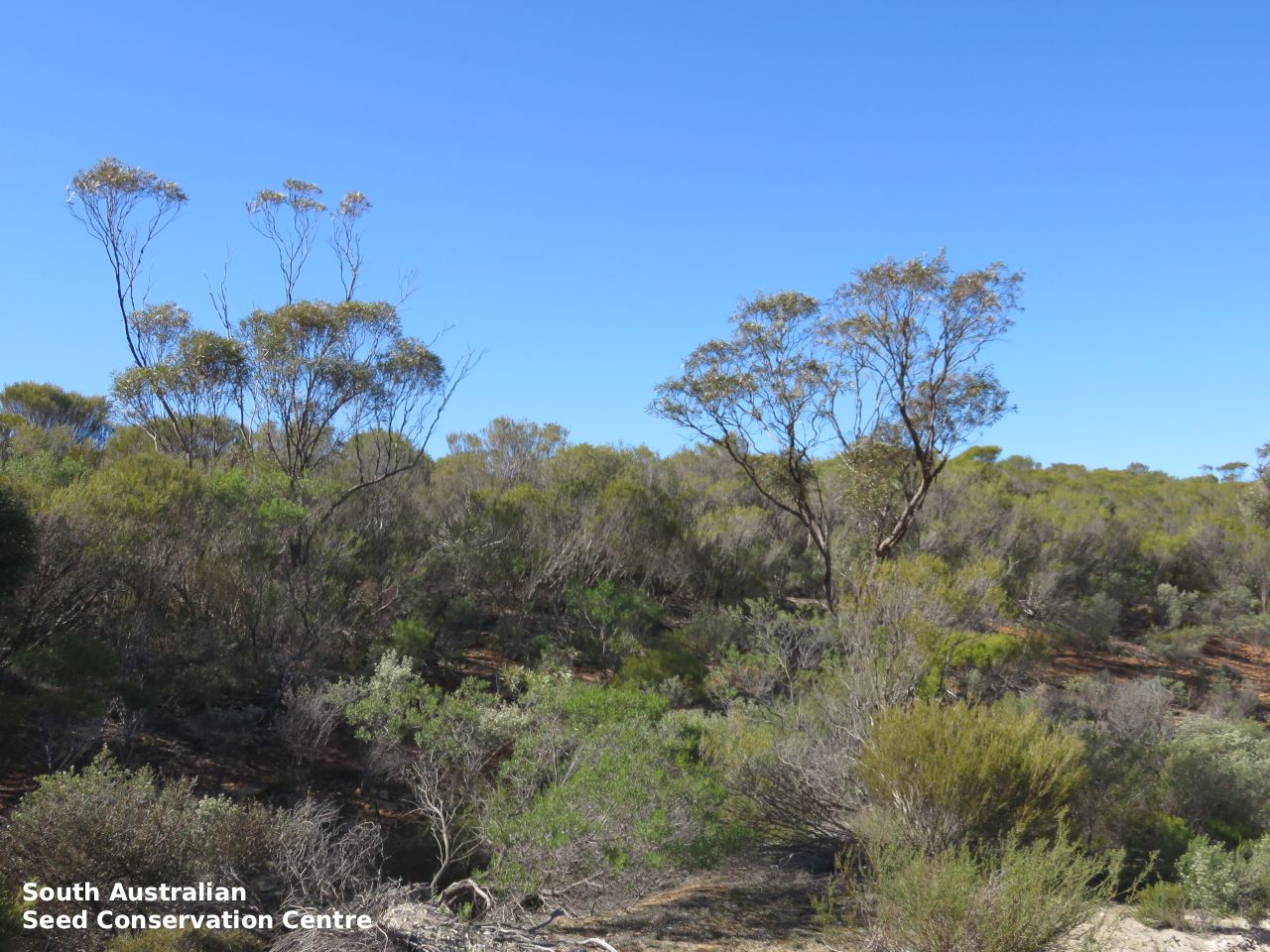

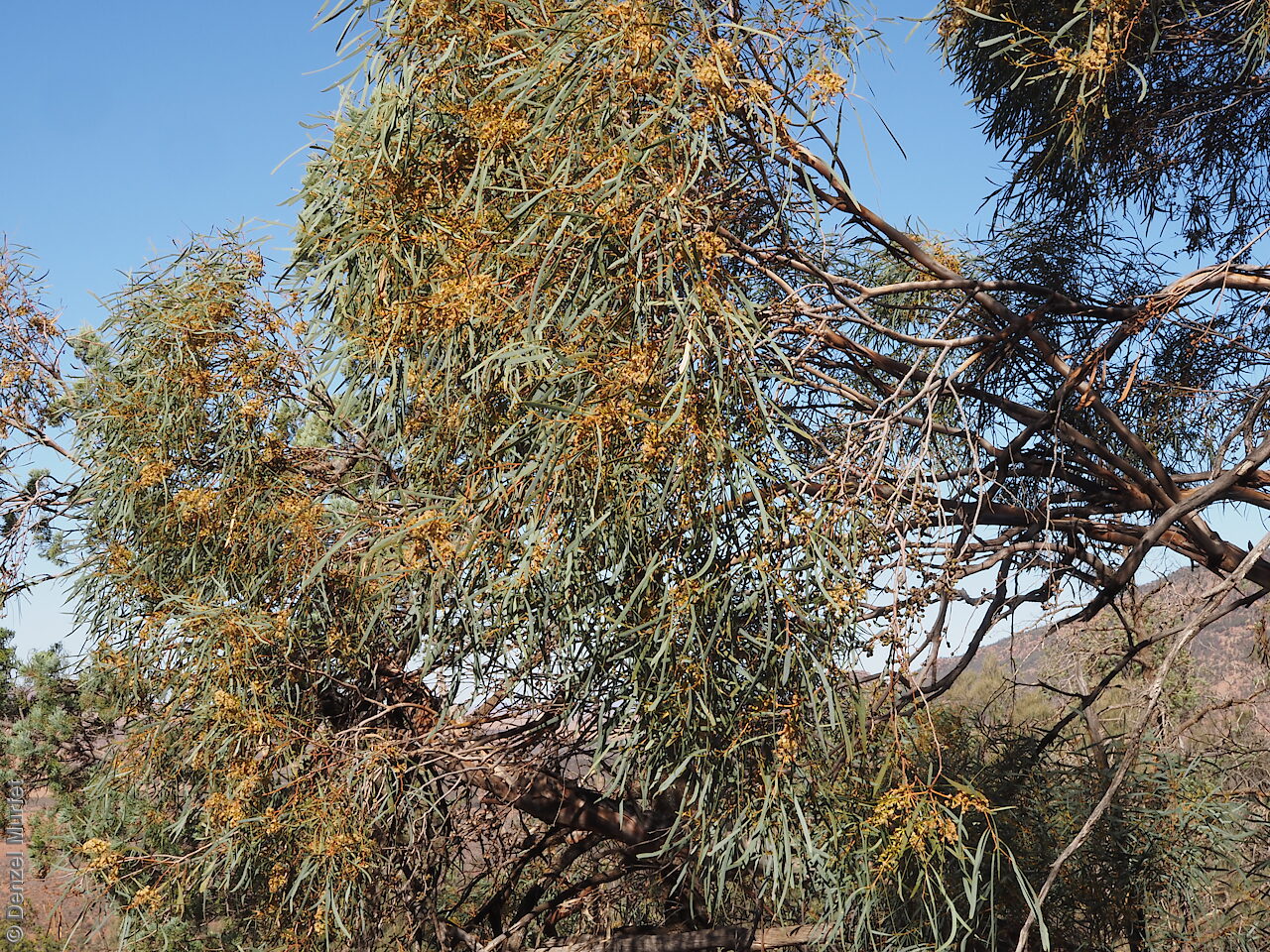
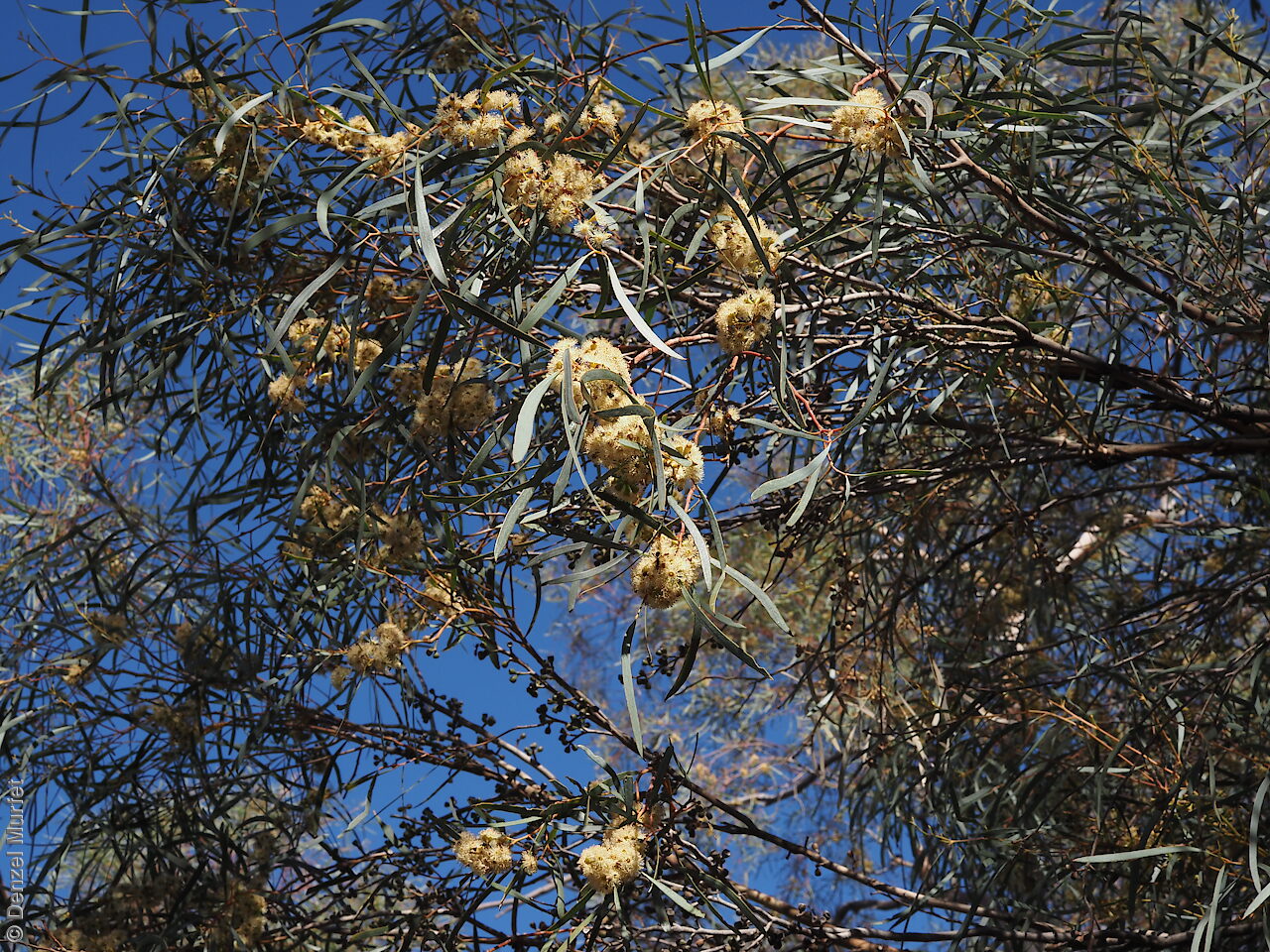

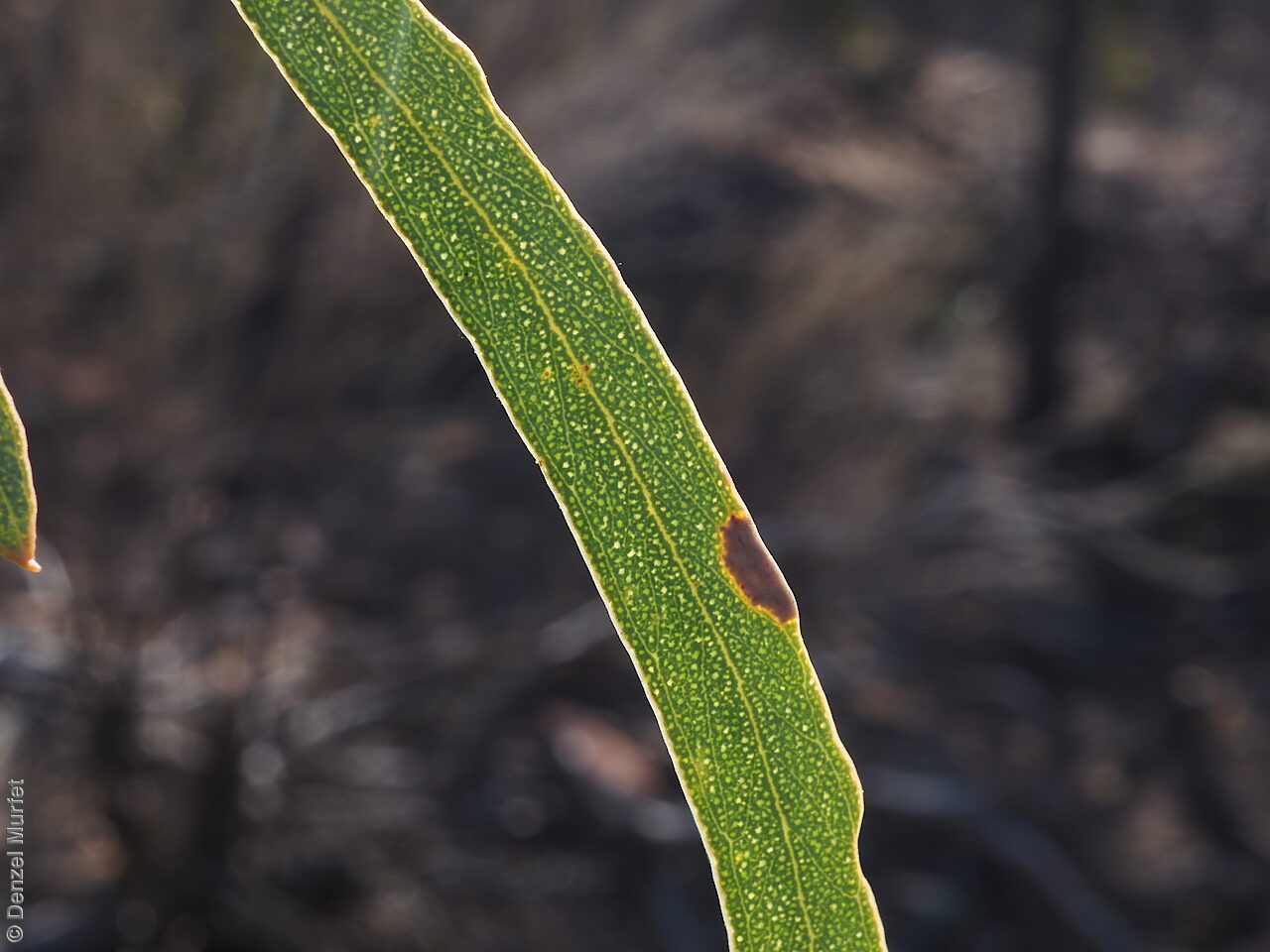
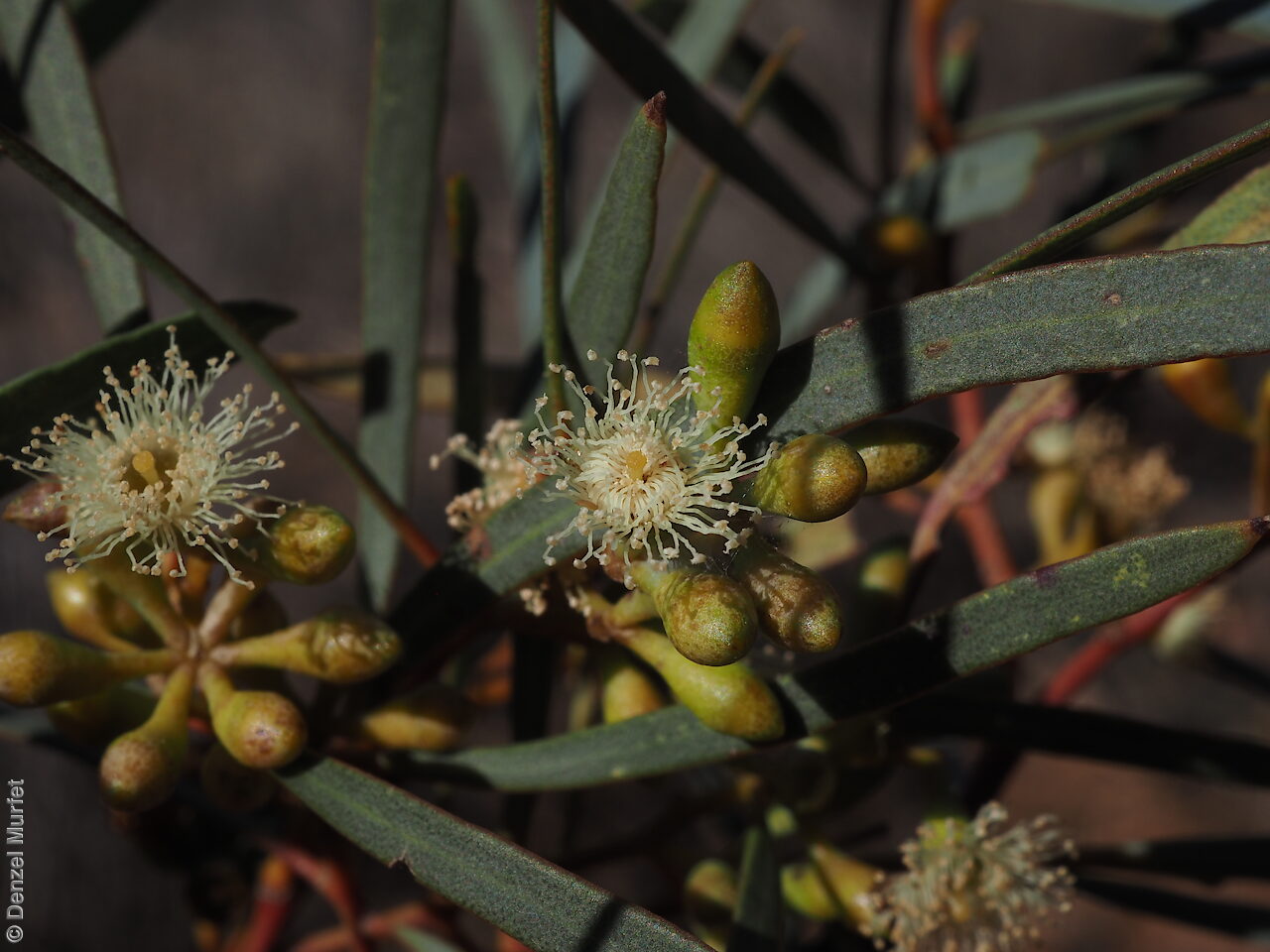

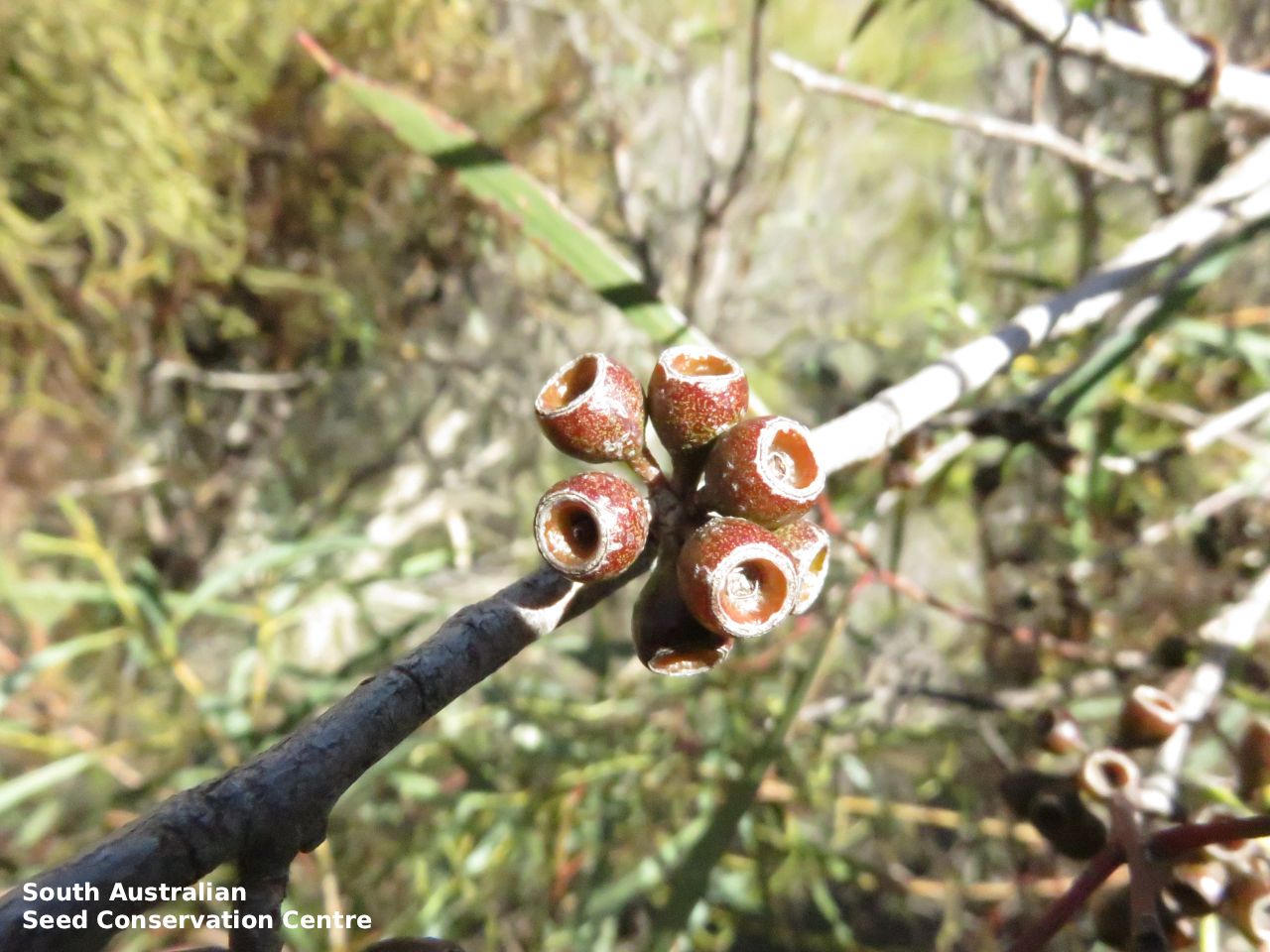
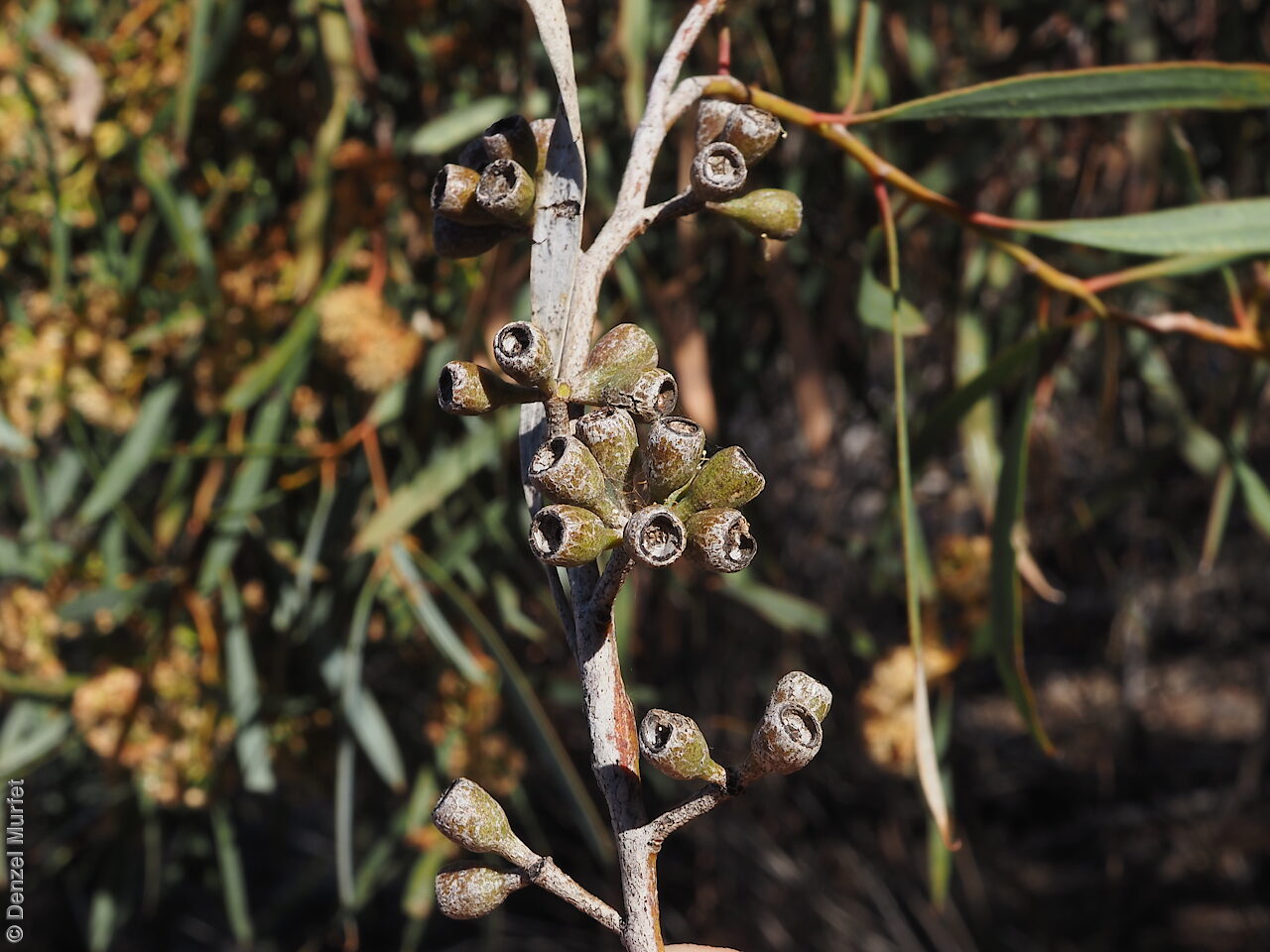
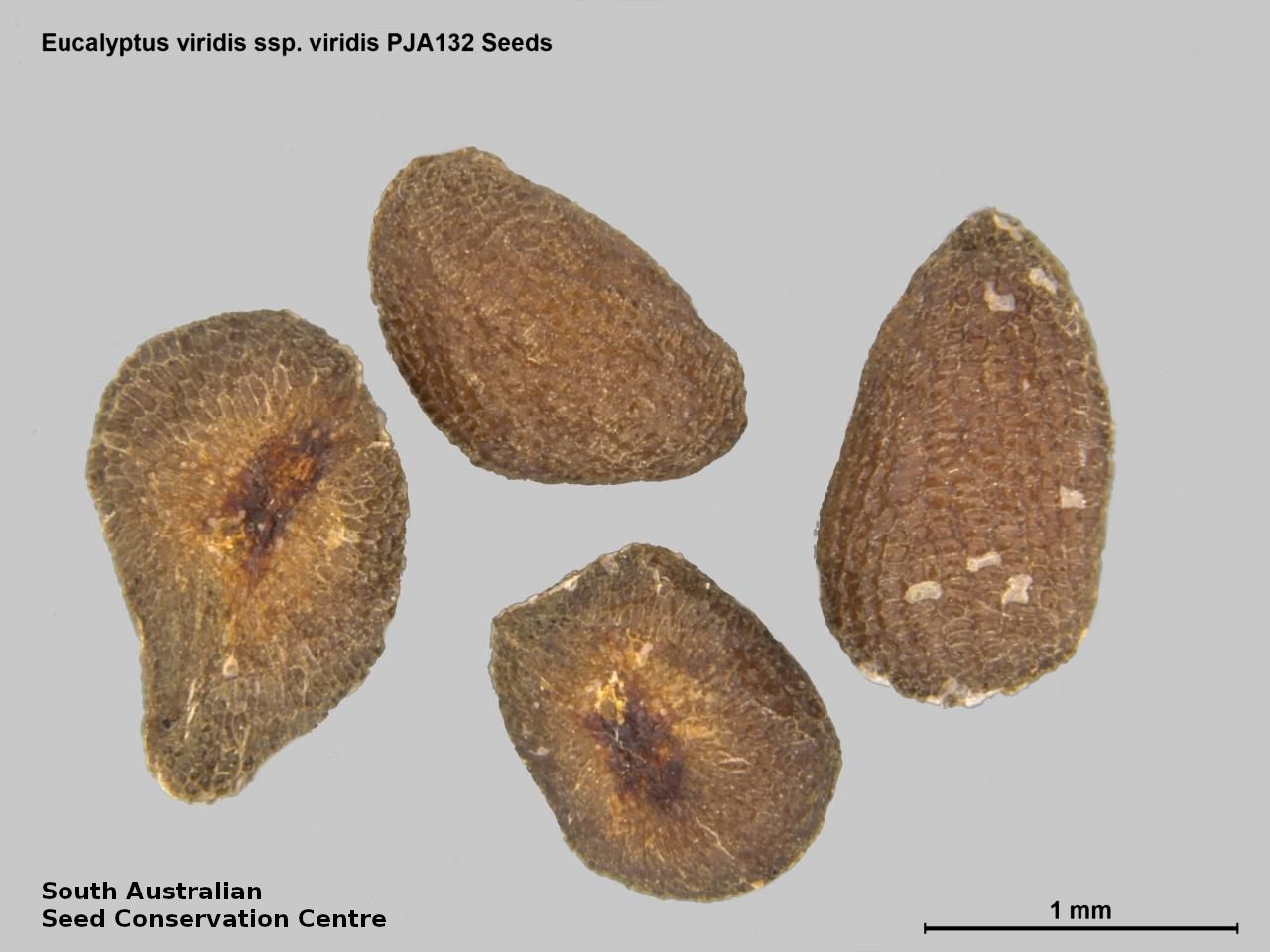


Botanical art
Prior names
Eucalyptus aff. viridis
Eucalyptus odorata var. angustifolia, partly
Eucalyptus viridis ssp. viridis
Eucalyptus fruticetorum, questionably
Common names
Narrow-leaf Peppermint Box
Green Mallee
Etymology
Eucalyptus from the Greek 'eu' meaning well and 'calyptos' meaning covered; alluding to the cap or lid which covers the stamens in the bud. Cajuputea presumably referring to the cajeput oil, an essential oil present in the leaves of many plants from the family Myrtaceae, which is from the Indonesian 'kayu' meaning white and 'putih' meaning wood, referring to the Melaleuca species from which the oil is traditionally produced.
Distribution and status
Endemic to South Australia and found on northern Eyre Peninsula, Flinders Ranges and northern Mount Lofty Ranges, growing on rocky hillslopes and ridges and deeper soils on the footslopes and undulating plains. Native. Common in South Australia.
Herbarium regions: Flinders Ranges, Eastern, Eyre Peninsula, Northern Lofty, Murray
AVH map: SA distribution map (external link)
Plant description
Multi-stemmed tree or mallee to 10 m tall with rough, hard to flaky, grey-brown bark up to medium branches and smooth, coppery to pale grey to cream bark above. Juvenile leaves linear to narrow-lanceolate, dull, blue-green to green. Adult leaves to 130 mm long and 14 mm wide,linear to narrow-lanceolate, dull to glossy, slightly blue-green to green. Flowers axillary in groups of 7-11. Buds to 8 mm long and 4 mm wide, bud-cap cone-shaped equal to or slightly shorter than the base. Flowers white. Fruits are cup-shaped to barrel-shaped fruit to 6.5 mm long and 5 mm wide, disc descending, valves 4 or 5 below or at rim level. Seeds are brown ovoid seed to 1.5 mm long and 1 mm wide, with reticulated surface. Seed embryo type is folded.
Seed collection and propagation
Collect seeds between January and December. Collect mature fruits that are dark and hard (difficult to break with a finger nail), with the valves un-open any time of year. Leave the fruits in a breathable container in a dry room for one to two weeks. This allows the valves on the fruit to open and release the seeds. Separate the seeds by placing all the materials into a bucket and shaking it to dislodge the seeds. Pass the material through a sieve to separate the unwanted material. The finer material will contain both seeds (soft) and frass (hard) usually distinguishable from each other but can be very similar in shape and colour. With finer sieves, the seeds can be separated from the frass but this is not essential for storage or propagation. Store the seeds with a desiccant such as dried silica beads or dry rice, in an air tight container in a cool and dry place. From two collections, the seed viability were high, ranging from 90% to 100%. Seeds are non-dormant, viable seed should germinate readily.
| Location | No. of seeds (weight grams) | Number of plants | Date collected | Collection number Collection location | Date stored | % Viability | Storage temperature |
|---|---|---|---|---|---|---|---|
| BGA MSB | 3,400 (1.57 g) 3,400 (1.57 g) | 5-Jun-2006 | PJA132 Flinders Ranges | 1-Aug-2007 | 100% | -18°C | |
| BGA | 12,700 (2.71 g) | 50 | 29-Aug-2007 | RJB73955 Northern Lofty | 19-Sep-2008 | 95% | -18°C |
Number of plants: This is the number of plants from which the seeds were collected.
Collection location: The Herbarium of South Australia's region name.
% Viability: Percentage of filled healthy seeds determined by a cut test or x-ray.